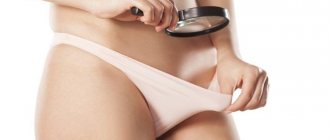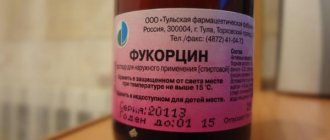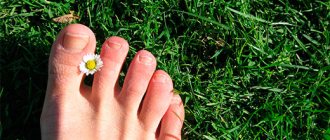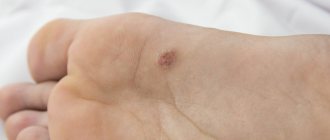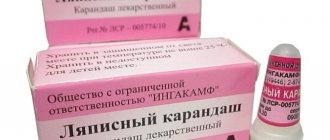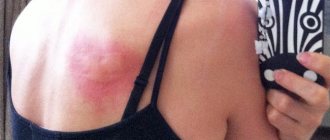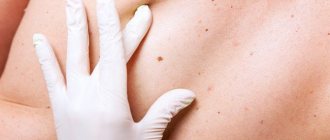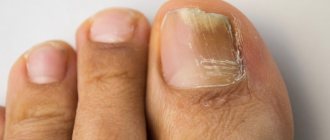After burning, a wart does not disappear immediately. The duration of this process depends on the method by which the wart was removed. You can get rid of an unsightly formation using a laser, cryodestruction, electrocoagulation, the use of chemicals and even surgical excision.
The most popular and sought-after methods for removing warts are the use of laser and freezing (cryodesurgery). With their help, you can get rid of formations as quickly and painlessly as possible. However, in order to prevent wounds from becoming infected, you should follow certain rules for caring for a wart after burning.
How and with what to treat a wound after a wart: features of postoperative care
Having eliminated the wart once and for all surgically, joyful people leave the dermatologist’s office and think that they can forget about the ill-fated skin pathology forever. But that's not true. It is important to take good care of the operated area. You should not take this lightly, because serious complications after cauterization are possible, so you need to know how and with what to treat the wound after a wart so that it does not become inflamed and a significant scar does not appear.
Features of postoperative wound care
Removal of any skin tumors means excision of warts and growths within the surrounding healthy tissue. Depending on the location, size and type of formation, dermatologists recommend the following removal methods:
- a liquid nitrogen;
- laser;
- electric burning;
- cutting with a scalpel;
- radio waves.
Such procedures last from a couple of seconds to half an hour. With proper anesthesia, they are completely painless. The operation does not bring any trouble to the patient, compared to subsequent care for an inflamed scar, which may appear if you do not know how to treat the wound correctly after removing a wart. Elimination of a cosmetic defect is part of the treatment procedure, which ends with complete tissue healing.
Regeneration of burn skin damage
In general, doctors distinguish several stages of healing:
- Removal operation.
- Wound.
- The appearance of a crust.
- Young healthy skin.
After burning, a funnel-shaped wound forms in place of the warty nodule. Its depth and width can be from a couple of millimeters to several centimeters. During the first weeks it becomes covered with a crust. For several days after burning out the nodule, there may be slight swelling and redness around the hole. This is a normal reaction of healthy tissue to injury.
After a few weeks, the crust disappears, and in its place is pink, young skin. Its shade usually differs from the surrounding tissue, but after a couple of months the difference in color disappears, and there are no consequences after surgery. If you don’t know exactly how to treat a wart after removal, and don’t ask your doctor about it, scar tissue may grow.
What absolutely should not be done
Many people try to speed up the wound healing process on their own, and sometimes make irreparable mistakes. Only a doctor will prescribe how to treat the wound after removing a wart with a laser or other method.
At home it is strictly prohibited:
- Use unverified folk recipes.
- Try to tear off the crust ahead of time using improvised means. When the process of epithelization of healthy skin is completely completed, it gradually disappears. This is a kind of bandage for a wound, and its premature removal often causes bleeding, the formation of age spots, and scarring of the tissue.
- Carry out water procedures in the area of the removed tumor.
- Cover with adhesive tape to hide marks from others.
- Cover with foundation.
- Injure the surface of the wound (touch, scratch, rub with a washcloth or clothing).
During rehabilitation, it is better not to be in the open sun, not to visit a swimming pool with chlorinated water, a sauna or a bathhouse. Young, delicate skin that has formed at the cauterization site is very sensitive to burns, increased pigmentation and ultraviolet rays.
Detergents, household chemicals, and cosmetics should not come into contact with the injured area. Alcohol lotions and fatty cosmetic creams should not be applied to the crust until the new epithelium is completely equal to the surrounding tissues.
If skin growths were removed on your hands, in the first week after surgery it is better to wash dishes only with rubber gloves, and generally try to avoid contact with running water, do not rub the skin with washcloths or pumice stones, and do not use a razor. For hand hygiene, decoctions of medicinal herbs are used, for example, calendula, chamomile, coltsfoot, which have antiseptic and regenerating properties.
How to treat warts after cauterization with liquid nitrogen
Doctors usually recommend post-operative skin care products immediately after cauterization. It is recommended to apply an antiseptic, for example, levomekol antibiotic ointment, three times a day. If the dermatologist did not immediately tell you how to treat the wound after removing warts with levomekol, then you can safely use the standard method - lubricate the crust with a thin layer of the product three times a day.
It is also useful during the period of epidermis regeneration to use oil solutions of vitamin E and A, which are sold in pharmacies. They increase tissue resistance to external negative influences and improve their elasticity.
After removing the crust, the depression gradually heals. The healing of the hole is accelerated by gels and creams with fruit acids. Glycolic and hyaluronic acid are useful for caring for the skin at the site of warts. They make scars as invisible as possible, even out skin texture, break down dead tissue, activate the production of collagen and elastin, and revitalize rough areas.
Therefore, for those who do not know how to treat a wart after cauterization with nitrogen, it is useful to buy wound-healing preparations with vitamins and beneficial acids. According to reviews from those who have undergone the wart removal procedure, light peelings have a good effect in the postoperative period in order to restore elasticity, silkiness and natural color to the epidermis at the burn site.
How to treat a wound after laser wart removal
Immediately after removing any tumor on the skin, the main thing is not to cause an infection. After using the laser beam, the injured area is lubricated with antiseptics:
- ordinary brilliant green;
- 5% iodine solution;
- potassium permanganate solution;
- furatsilin.
After the wound has healed and is covered with healthy skin, local remedies are used. The doctor will tell you how to treat the wound after removing a wart with a laser correctly and how many times a day to apply the product.
For those who have decided to undergo surgery, but do not know what to do after removing a wart with a laser, or how to treat an injured funnel, experts recommend:
- hydrocortisone ointment;
- solcoseryl;
- methyluracil ointment.
In any case, regardless of whether a laser or current, liquid nitrogen or a scalpel was used to remove warty nodules, if alarming symptoms of infection appear, you must rush to see a doctor.
- wound infection;
- suppuration;
- mucus secretion;
- constantly wet crust;
- unpleasant odor;
- soreness;
- bleeding
The specialist will prescribe competent anti-inflammatory therapy to relieve the infection and allow the skin to regenerate evenly.
The main thing is not only how and with what to treat the wart after removal with nitrogen, laser or another method, but also to prevent the manifestation of such pathological skin growths. The body should receive enough vitamins, microelements, and proteins from healthy foods. This strengthens the immune system and prevents warts from spoiling your mood and appearance.
Sources used: otpapillom.ru
Reviews
Reviews about the cryodestruction procedure are mixed. Each patient has his own feelings and impressions about the procedure. The results and consequences are also different. This may be due to both the individual characteristics of the body and the level of professionalism of the doctor who performed the procedure.
Dima
I got a plantar wart. The rough growth interfered with walking and caused pain. The doctor advised removal by cryodestruction. There were 5 sessions in total. The procedure was very painful for me. Rehabilitation is no easier - it is impossible to step on your foot or put on shoes. But when everything healed, healthy skin remained in place of the wart. Until the wart grows back, I hope it won’t grow back.
Burning a wart with liquid nitrogen
A wart is an unpleasant and unattractive skin growth that can appear anywhere on the body. Usually it does not cause pain, but it is injured by friction against clothing, grows, and sometimes even degenerates into a malignant formation. Fortunately, there are many ways to remove it. One of the most popular is cauterization with liquid nitrogen. Let's take a closer look at how the procedure goes and what happens after burning off the wart with liquid nitrogen.
Basics about warts
The growth is formed due to the rapid growth of skin cells under the influence of the human papillomavirus. This occurs when the immune system is weakened and the virus is activated, which can remain in the carrier’s body for years. The trigger mechanism is stress, hypothermia, past illnesses, and chronic fatigue.
A wart is painless; it mainly causes psychological discomfort due to its appearance, especially if it is located in a visible place (for example, hands, neck, face). The colors of the formations are very different - from colorless to white, pink, brown, black with a uniform color or interspersed with other colors. Based on their shape, there are ordinary, flat and thread-like forms of the defect. Externally, other skin formations can be confused with a wart, so for an accurate diagnosis it is worth consulting a dermatologist.
Whatever the shape and color of the wart, they try to remove it. There are different methods for this, the choice of which depends on various factors - the cost of removal, the nature and number of formations, location.
Treatment
Methods for removing warts:
- exfoliation with acids;
- cauterization with liquid nitrogen;
- laser exposure;
- folk remedies.
Each of these methods has its own advantages and disadvantages. Home treatment with folk remedies allows you to use inexpensive drugs and products . This is a gentle option, but less effective and fast.
The laser acts precisely on the required area, the procedure is carried out by a professional doctor or cosmetologist and has no contraindications. However, it is characterized by pain, high cost and the presence of a recovery period when it is necessary to protect the treated area from the influence of sunlight.
Application of liquid nitrogen
A widely used method of treating warts is cryodestruction - exposing them to liquid nitrogen. The substance is applied to the formation using an applicator. The device used is a wooden stick with cotton wool at the end or a special device with tips of different shapes for precise impact. Skin contact time is from 10 to 40 seconds. In this case, the patient does not immediately feel pronounced pain, only cold. After burning, the growth turns pale and white, and after a short time the area around it turns red and swells.
A bubble after cauterization appears a few hours after freezing. Inside it there is hemorrhagic or serous content. After a blister appears, certain recommendations must be followed:
- Do not wet the bladder to prevent it from getting wet.
- Do not puncture or injure the blister. This will damage the outer shell, and the internal contents may fester.
- Recommended care is disinfection of the skin around the wart being removed. To do this, it is enough to smear the blister and the area around it with a solution of potassium permanganate or salicylic alcohol. It can also be treated with other disinfectants and drying agents.
After a few days, the bubble dries up and a crust may appear in its place, which will completely dry out and fall off in one or two weeks. There will be a pink patch of injured skin underneath. If the wart is shallow, then one procedure will be enough to completely get rid of it. In difficult cases, short-term exposure to liquid nitrogen (for example, when removing a growth in a child to reduce the pain effect), repeated treatment is carried out.
Features of eliminating warts with liquid nitrogen
Depending on the type and location of the tumor, there are a number of features of the procedure. When removing plantar warts, it is necessary to take into account the depth of their germination and the duration of the recovery period - it will be painful to step on the treated areas . Therefore, the doctor does not apply the applicator deeply, but the sessions take place frequently - every three to four days. The full course of treatment may take several months.
Teenage warts are removed using the shading technique - quick rotational movements without strong pressure. Treatment is carried out several times per session with a break of 2-3 minutes.
Advantages and disadvantages of cryodestruction
- low cost of the procedure;
- short session time;
- preventing the spread of warts to adjacent areas of the skin;
- minimal risk of negative consequences;
- no traces of removal after several months.
The disadvantages include:
- pain after cauterization;
- if the doctor is insufficiently qualified and experienced, a burn mark is likely to appear;
- difficulty in removing large warts;
- the need, in some cases, for several sessions.
The perception and feedback of people who have had a growth removed using cryodestruction will largely depend on the qualifications of the doctor and the pain threshold of the patient. The method has become widespread and is optimal when choosing a treatment option for wart growths.
Sources used: fitootvet.com
Average prices
The cost of the cryodestruction procedure differs depending on the type, size, location of the formation, and the number of warts. If multiple items need to be removed, many clinics offer discounts. The price is also affected by the location and pricing policy of the medical or cosmetology center.
The average cost of a cryodestruction procedure is:
- 500-900 rubles – removal of a wart with a diameter of up to 5 mm;
- 1200-1900 – removal of a formation larger than 5 mm;
- 1000-1300 – removal of a plantar wart.
Burning out warts
The most effective way to get rid of a wart forever is to burn it off. Ointments and folk remedies do not have such a radical change in skin formation, but cauterization of warts will help avoid the problem once and for all.
Burning as a removal option
Warts, papillomas and condylomas can cause a lot of discomfort to the owner.
There are a fair number of effective ways to remove them, both in medical and cosmetology clinics and at home.
The fastest and most effective ways are:
- cryodestruction,
- laser burning
- or use of medications.
However, you can cauterize the growth using traditional medicine.
Cryodestruction – burning with liquid nitrogen
This method works as follows: the skin neoplasm is exposed to nitrogen, which has a temperature of 196 degrees.
Liquid nitrogen affects tissues, freezing metabolic processes and interrupting their nutrition, after which the wart soon dries out and falls off.
- The substance is applied using a special tip or cotton swab.
- Sometimes the procedure is quite painful and can cause relapses.
- During pregnancy, in case of neurosis and inflammation of the skin, the procedure is not performed.
The method has proven itself well when burning out simple warts that have a clearly defined outline and are yellowish or gray in color. The wart can grow to the size of a large pea. Appears most often on the hands, feet, and head.
The method will also help to cope with soft pointed papilloma, which has a soft structure and looks like a skin process, sometimes hollow inside.
Most often, papillomas appear on the mucous membranes of the genital organs of men and women, they rub and cause significant discomfort.
Treatment with chemicals
You can get rid of the tumor using chemicals and medications, such as:
Sometimes a barely noticeable mark remains at the site of the growth.
Chemical cauterization is effective for almost all types of neoplasms: simple warts, soft papillomas and even flat condylomas, which are multiple growths on the back of the hands, legs and even on the face.
It is necessary to carry out such a procedure under the supervision of a specialist, since the operation is quite painful, and the drug should not get on healthy tissue, otherwise it will cause a chemical burn.
When getting rid of growths at home with iodine solution or vinegar essence, you need to stick a piece of medical plaster on the affected area, cut a hole along the contour of the wart and drip the product.
Burning out skin tumors with laser
Many clinics offer rapid removal of tumors using laser therapy. Under the action of the laser, the affected layer of skin evaporates.
The effect of a laser beam on a wart
The procedure must be performed in certified clinics by qualified specialists, under local anesthesia. Laser therapy shows good results in the treatment of all types of warts.
- Healing is almost painless and no trace remains of the growth after several weeks.
- After laser therapy, it may be necessary to apply regenerating antibacterial creams and gels.
- There are no relapses after laser therapy.
Warts are contagious and spread from person to person through skin-to-skin contact. They cause discomfort not only physical.
Experts say that warts and papillomas provoke skin cancer, so the quick and effective method of getting rid of the growth is to consult a doctor.
How to burn at home
There are several effective methods of cauterizing skin shoots using folk methods.
Tea tree oil
The products presented below are sold in any pharmacy, and the ease of use will allow you to do it yourself without turning to specialists. The period of treatment using traditional methods ranges from 2 weeks to 2 months.
- Celandine and dandelion juice is considered the most proven folk method. By rubbing the wart with the fresh milk of these plants every day, you can achieve its gradual drying. Over time, the roots of the wart will become visible, it will come out and disappear completely. The method is absolutely painless; after applying the juice, you can apply a bandage or patch to the skin.
- Tea tree oil treatment. Tea tree oil works similarly to celandine juice. You need to apply it every day, you can alternate with dandelion or celandine milk, applying to the growth every other day.
- Treatment with malavit. Malavit is a medicine sold in a pharmacy in a small bottle. The product should be applied to the affected area of skin using a cotton swab and left on the skin for at least 12 hours. Malavit does not contain alkalis or acids and fights warts painlessly. Frequency of application: every other day.
- Treatment of warts with a mixture of baking soda and castor oil. It is necessary to mix soda with castor oil to the consistency of a thick paste. Apply and rub the mixture twice a day with a tight bandage. The treatment period is 1 month from the date of application.
How to protect yourself from a dangerous virus (prevention)
The fact is that when infected, the virus does not immediately manifest itself; it can remain in a state of hibernation for a long time, but is ready to become active at any time, just once again you succumb to stress or have a cold.
- The immune system will weaken, and warts and papillomas will literally come out.
- The surest way to prevent an insidious viral disease is to strengthen the immune system.
- Temper yourself, eat nutritious and healthy food, play sports and take a contrast shower.
To protect yourself, during the cold season it is recommended to take strengthening and tonic infusions of herbs, fruit drinks and vitamins. Try to avoid physical contact with infected people and stay healthy!
Sources used:borodavkam-net.ru
Causes of pain
The skin growth does not become inflamed and does not start to hurt just like that. This requires some kind of provoking factor.
What causes pain and inflammation:
Any, even minor, damage. Warts are often rubbed by clothing or shoes. New growths on the neck are often injured by chains or a collar, and under the hair - when combing. You can accidentally tear off a wart with a fingernail, washcloth, razor, or other methods. Children injure growths while playing or just pick them out for fun. All this causes compression, damage or tearing off of the growth, and, as a result, inflammation of the wart and surrounding tissue begins.
Exposure to cleaning products. If a wart on your finger hurts, the cause could be any household chemical used for laundry, washing dishes, or cleaning bathtubs. If there are growths on your hands, then when using such products, you must wear rubber gloves.
Wrong treatment with home remedies
When treating warts with traditional methods, care should be taken. Many products contain acids, which, if they come into contact with the skin around the growth, cause burns or irritation.
Such areas of the skin quickly begin to become inflamed, gradually engulfing the neoplasm.
The remaining root after removal. Medicines designed to remove warts at home are effective, but do not always cope with their task. The remaining root begins to grow, which can cause itching and pain. Even if the growth has been completely removed, the remaining hole must be treated with caution, do not injure it, use an antiseptic, otherwise an infection may develop.
Transition to a malignant form. This happens very rarely, but if the wart is damaged frequently, it may happen that it will no longer be benign and you will need to consult an oncologist.
Sometimes warts hurt after being in water for a long time. In addition, softened growths are more susceptible to accidental scraping. Less commonly, the causes of inflammation are long-term use of hormonal drugs, severe stress, and hereditary diseases.
Consequences of wart removal: blisters and blisters
There are many methods for removing growths from the skin; the methods for removing warts are different. The doctor will help you find the most effective method, based on the individual characteristics of the person.
The consequences of wart removal worry the patient even before the procedure begins. No one wants traces of operations to be obvious.
They are afraid of the possibility of scars appearing after surgery. The consequences after cauterization with a laser or liquid nitrogen are especially frightening.
Signs and symptoms
The skin disease is of viral origin. Various reasons can provoke the appearance of tumors that worsen the appearance. The main one is a malfunction of the immune system. A weakened body is open to infection. The appearance of any type of growth should force a person to listen to the processes occurring inside the body.
A timely visit to a dermatologist is required, who will suggest ways to remove warts. It is he who will determine the nature of the neoplasms and examine the bubble that appears after the operation. A specialist will identify the causative agent of skin lesions. The first symptoms of this terrible disease are rashes and skin changes. You need to observe the color of the integument and the shade of the moles.
Signs of violations include deterioration of the condition of birthmarks and their increase in size.
The first appearance of tumors on the body should cause concern. The place where the wart appeared does not hurt, no matter how much time has passed since its appearance.
Modern methods
You can apply a classification recognized as effective by medical sources.
Doctors divide all treatment methods into the following groups:
- Folk remedies and preparations created and used at home independently. Drugs that are in demand include decoctions, ointments, tinctures, and compresses. They are based on various medicinal plants: celandine, garlic, wormwood, potatoes. Popular ones include: “Superclean” (extract based on potassium and sodium), “Verrukatsid”, “Cryopharm”, “Solcoderm”. All remedies will not leave visible consequences. Treatment can be done at home. Even if taking medications damages the skin, it will gradually regain its previous healthy appearance. If you properly treat the skin after a course of treatment, it will be difficult to find the location of the unpleasant growth. But careless use can lead to burns. Then the consequence will be another skin disease. The effect will become painful: there will be more warts, they will cover other areas, creating entire halos, islands of ugly growths. The wound after wart removal will increase the treatment process, the condition will worsen, and additional care will be required.
- Medical removal technologies. Modern developments in medicine make it possible to remove growths from the body quickly and almost painlessly. Such methods include laser burning, liquid nitrogen, and electric current. All cauterization procedures are carried out in medical centers by specially trained personnel.
All cauterizations have different effects on the skin. They leave no traces of damage. Therefore, most patients resort to them. Cauterization with laser and liquid nitrogen are considered the most popular methods. They are different from the procedures used before. Basically, a wart could be removed from a hand or other part of the body by cutting it out.
The scalpel left scars. A long recovery was required, complications arose, and the patient felt that not only the affected area hurt. Nowadays, such methods have been abandoned, leaving them in the past. Only unqualified doctors can suggest cutting out growths using such a surgical instrument.
The need to remove skin tumors
- Painful sensations (the whole body hurts).
- Feeling of itching and burning at the site of the growth.
- Rapid growth, increasing size.
- There is a change in color, a merging of several shades of one formation.
- Reproduction of the virus, transition from one site to another (jumping manifestation).
- Location in plain sight for others (face, neck).
- The blister or bubble after the session hurts for a long time and does not heal.
- Locations in places where there is a risk of injury.
It happens that the consequences of removal lead to health problems and deterioration of the condition. The person must use special care.
Such deviations include:
- Sensitivity to laser and liquid nitrogen.
- Epileptic abnormalities.
- High blood pressure (various types of hypertension).
- Irritation around a neoplasm of an uncertain clinic.
- Long-term unsuccessful treatment.
- The period of pregnancy and lactation (feeding the child).
- Infectious inflammations, diseases, minor ailments.
Healing procedure and elimination of consequences
After the treatment session, the surgical site and burn should be protected from external negative influences. It is better to foresee the consequences by treating the wound. It is not the mark itself from cauterization with a laser or liquid nitrogen that hurts, but a layer or area of skin.
Any trace of surgery requires protection; treatment can be made effective in different ways. The skin heals individually. It is impossible to know how many treatment sessions will be required.
If a wart is removed with liquid nitrogen, a blister may appear on the skin. It cannot be wet. Sometimes patients try to puncture the blister to shrink it. This should not be done under any circumstances.
After cauterization with a laser or liquid nitrogen, you will need a strong solution of medical antiseptic. You can replace it with salicylic alcohol. You need to wet the burn carefully, it will heal and be covered with new skin. Caring for the wart site is done with extreme caution to avoid injury. The skin will begin to peel off, the bubble will shrink, and treatment will be stopped during this period if the person is not in pain.
To eliminate the consequences (a burn appeared, a blister) after removing a wart and in order to prevent recurrence, it is necessary to carry out a number of hygienic and sanitary actions:
- Washing common utensils.
- Washing bedding and other items used during the treatment period.
- Sanitary cleaning using disinfectants in common areas: bath, washroom, shower, toilet.
- Change washcloths and other detergents. If it is not possible to do this, they are boiled and scalded using household cleaning products.
Particular attention should be paid to surgery with plantar warts, since it may result in a burn to the foot.
You can only entrust the procedure to a professional, since much in the operation depends on the level of qualifications and experience of the doctor. If there is discomfort in the area of papilloma removal, there is no need to draw personal conclusions and treat it yourself, but rather, without delay, contact a specialist to find out the cause.
Sources used: mirmedikov.ru
Care and possible complications after burning a wart with liquid nitrogen
Warts on the body, especially large ones and protruding above the surface of the skin, are usually removed after consultation with a doctor. One of the effective methods is cauterization with liquid nitrogen, or cryodestruction. The procedure involves exposing overgrown tissue to low temperatures, which causes destruction and rejection of the tumor due to deep freezing. The technique is effective, but after burning the wart with liquid nitrogen, special care of the treatment area is required.
Skin care rules after the procedure
After burning off the wart, the treatment area first becomes white and then turns red. In most cases, the next day a bubble resembling a callus will form in the area exposed to nitrogen. The blister can vary in size depending on the severity of the exposure and is filled with a colorless or reddish liquid. Usually the bubble resolves on its own within a week, leaving no traces, but special care is required before the skin is restored.
There are a number of rules regarding the treated area:
- Piercing, cutting, or pressing on the bubble after cauterization is strictly prohibited. This can lead to infection and the area may fester or turn black.
- For disinfection, the resulting blister is lubricated with salicylic alcohol or a strong solution of potassium permanganate twice a day until a dry crust appears on it. The healing process takes on average up to 10 days. No other processing is performed.
- It is prohibited to wet the skin, apply cosmetics, or take a steam bath until the skin is restored.
- It is necessary to avoid prolonged exposure to sunlight on healing skin. It is recommended to apply sunscreen only after complete healing. It is advisable to protect the skin with special means until the pinkish spot at the site of the former papilloma disappears.
- Do not cover a blister or inflamed skin with a band-aid.
- If the area is very painful, you can take a painkiller tablet - Analgin or Nurofen.
If all the rules are followed and the impact is sufficient, the wart will disappear completely without leaving a scar.
Pros and cons of cryodestruction
Removing viral tumors with liquid nitrogen is a common procedure, and if all the nuances are followed, good cosmetic results can be achieved.
The clear advantages of the method include:
- no need for preliminary preparation of the site by the patient;
- fast recovery;
- the procedure does not take much time and is affordable;
- clear, targeted effect on growth;
- the risk of scar formation after proper removal and healing is minimal, which allows the method to be used on any part of the body, including the face.
The disadvantages of cryodestruction include:
- The removed tissue cannot be used for histological examination . Often, removal with nitrogen is abandoned in favor of more traumatic methods for painful, altered warts, since it is necessary to exclude the development of an oncological process.
- Pain during and after cauterization. If the tumor is large, severe pain may occur for several days, so the method is used with caution in childhood.
- Inability to control the depth of nitrogen exposure. Often, several procedures are required to completely remove a wart, since the first time it was not possible to calculate the power of destruction and treat the formation to its full depth.
- Presence of contraindications. Thus, the method is not used for epilepsy, high blood pressure, if there is skin irritation around the papilloma, during pregnancy, or if there is an ongoing infectious or inflammatory disease in any organ.
Contraindications to the procedure
In order to cauterize the growth, you need to make sure that there are no contraindications for the procedure.
Exposure to warts with nitrogen is not carried out if:
- presence of high blood pressure;
- hyperemia and rashes near the affected area;
- elevated body temperature in a patient due to acute respiratory infections, flu, colds;
- infections;
- chronic inflammatory processes in the body;
- epilepsy;
- existing individual intolerance to the action of the ingredient on the skin (cold allergies).
Complications and consequences that arise or appear spontaneously after removing a wart with liquid nitrogen may still occur.
